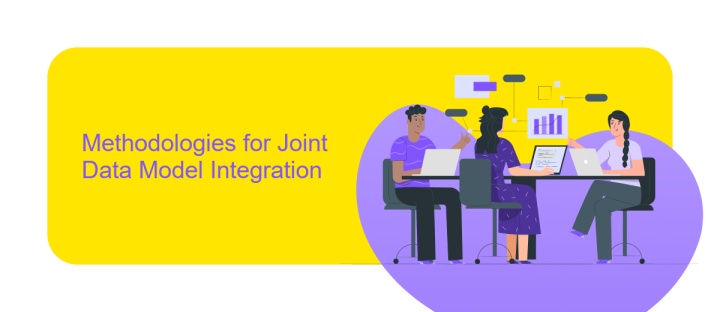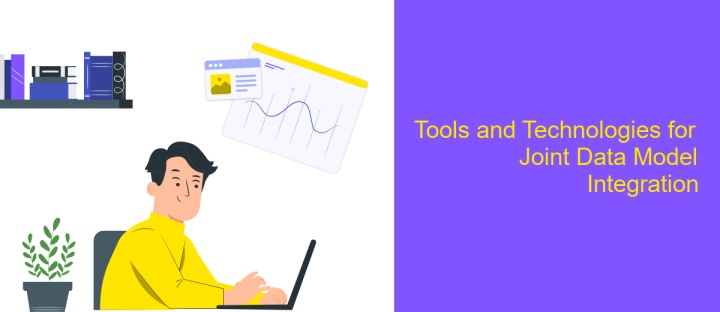Joint Data Model Integration
The Joint Data Model Integration (JDMI) represents a groundbreaking approach to unifying disparate data systems into a cohesive framework. By seamlessly integrating diverse datasets, JDMI enhances data accessibility, accuracy, and interoperability. This innovative model fosters collaborative decision-making and strategic insights across various sectors, streamlining processes and optimizing resource utilization. In this article, we explore the core principles, benefits, and applications of JDMI, highlighting its transformative impact on modern data management practices.
Introduction to Joint Data Model Integration
Joint Data Model Integration (JDMI) is a comprehensive approach to unifying disparate data models across various systems and platforms. This method aims to streamline data management by creating a cohesive framework that facilitates seamless data exchange and interoperability. By aligning different data models, organizations can enhance data accuracy, reduce redundancy, and improve decision-making processes.
- Enhances data consistency and integrity across multiple platforms.
- Facilitates efficient data sharing and collaboration among stakeholders.
- Reduces data silos and promotes a unified data strategy.
- Supports scalability and adaptability in dynamic business environments.
Implementing JDMI involves understanding the unique requirements of each data source and developing a unified model that accommodates these needs. This process often requires collaboration between IT specialists, data scientists, and business analysts to ensure that the integrated model aligns with organizational goals. As businesses continue to rely on data-driven insights, JDMI becomes an essential strategy for maintaining competitive advantage and fostering innovation.
Methodologies for Joint Data Model Integration

Joint Data Model Integration requires a systematic approach to effectively combine diverse data sources into a cohesive framework. One methodology involves the use of a centralized data repository, which acts as a single source of truth for all integrated data. This repository can be implemented using data warehousing technologies that facilitate the consolidation and normalization of data from various systems. Additionally, data mapping and transformation processes are crucial for ensuring that data from disparate sources adhere to a unified schema, thereby enabling seamless integration and analysis.
Another effective methodology is the use of integration platforms like ApiX-Drive, which streamline the process of connecting different data models. ApiX-Drive offers automated workflows that allow for the easy synchronization of data across multiple applications without the need for extensive coding. This service supports a wide range of integrations, providing flexibility and scalability to accommodate evolving data needs. By leveraging such platforms, organizations can achieve efficient data model integration, reducing the time and effort required to maintain data consistency and integrity across systems.
Challenges and Considerations in Joint Data Model Integration

Integrating joint data models presents a variety of challenges that organizations must navigate to ensure successful implementation. One of the primary concerns is maintaining data consistency across multiple sources, which often have differing formats and standards. This requires meticulous planning and a robust framework to align disparate data systems. Additionally, data privacy and security are paramount, as integrating data from various sources can expose sensitive information if not handled correctly.
- Data Consistency: Ensuring uniformity in data across different systems is crucial to prevent discrepancies.
- Data Privacy and Security: Protecting sensitive information is essential, necessitating stringent security measures.
- Scalability: The model should accommodate growing data volumes without compromising performance.
- Interoperability: Systems must be able to communicate effectively to facilitate seamless data integration.
- Cost Management: Balancing the financial implications of integration with the potential benefits is critical.
Successfully addressing these challenges requires a strategic approach that incorporates advanced technologies and best practices. Organizations should invest in skilled personnel and leverage automation tools to streamline the integration process. By prioritizing these considerations, companies can enhance their data infrastructure, leading to more informed decision-making and competitive advantage.
Tools and Technologies for Joint Data Model Integration

Integrating joint data models requires a range of tools and technologies that facilitate seamless data exchange and interoperability. These tools are essential for ensuring data consistency, quality, and accessibility across different systems. By leveraging advanced technologies, organizations can effectively manage and integrate diverse data sources, enabling more informed decision-making.
One of the primary challenges in joint data model integration is dealing with heterogeneous data formats and structures. To address this, organizations employ various technologies that support data transformation, mapping, and synchronization. These technologies help bridge the gap between disparate systems, allowing for a unified view of data.
- ETL Tools: Extract, Transform, Load (ETL) tools streamline the process of extracting data from multiple sources, transforming it into a consistent format, and loading it into a target system.
- API Management Platforms: These platforms facilitate the creation and management of APIs, enabling smooth data flow between different applications and services.
- Data Integration Platforms: Comprehensive solutions that provide end-to-end data integration capabilities, supporting real-time data processing and analytics.
By utilizing these tools and technologies, organizations can overcome integration challenges, ensuring that their joint data models are robust, scalable, and capable of supporting complex business operations. This strategic approach enhances data-driven insights and fosters collaboration across departments.
Future Trends in Joint Data Model Integration
As we look towards the future of joint data model integration, the landscape is expected to evolve with advancements in artificial intelligence and machine learning. These technologies will enhance the ability to process and analyze large datasets, making integration more seamless and efficient. The adoption of cloud-based solutions will continue to grow, providing scalable and flexible platforms for data integration. This will enable organizations to break down silos and foster collaboration across different departments and systems.
Furthermore, the integration process will become increasingly automated, reducing the need for manual intervention and minimizing errors. Services like ApiX-Drive are leading the way by offering user-friendly tools that simplify the integration of various applications and systems. They provide a platform that allows businesses to connect their data sources effortlessly, ensuring real-time data flow and synchronization. As these trends develop, organizations will be better equipped to leverage their data assets, driving innovation and gaining a competitive edge in their respective industries.
FAQ
What is Joint Data Model Integration?
Why is Joint Data Model Integration important?
What challenges are associated with Joint Data Model Integration?
How can organizations overcome integration challenges?
What role does automation play in Joint Data Model Integration?
Time is the most valuable resource for business today. Almost half of it is wasted on routine tasks. Your employees are constantly forced to perform monotonous tasks that are difficult to classify as important and specialized. You can leave everything as it is by hiring additional employees, or you can automate most of the business processes using the ApiX-Drive online connector to get rid of unnecessary time and money expenses once and for all. The choice is yours!

